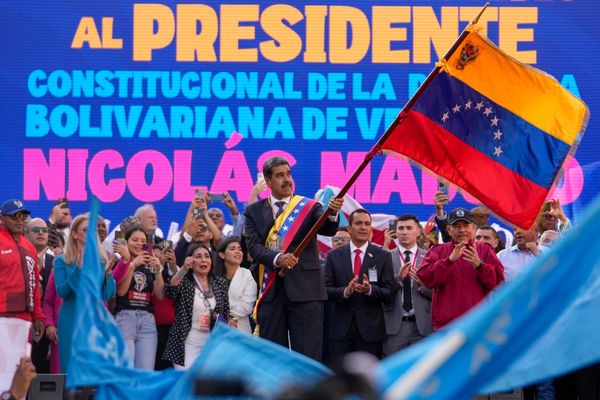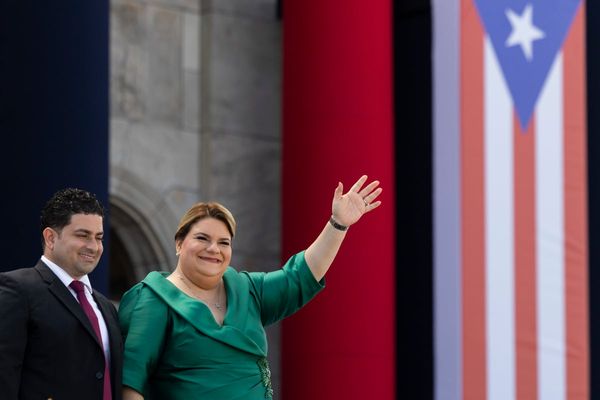
Last week, Facebook’s “Supreme Court” ruled on whether former U.S. President Donald Trump should be allowed back on the platform. The decision was anticipated with bated breath. And the actual ruling (summary: Keep the ban; toss the problem back to Facebook) has prompted a flood of ink across news and opinion columns—six in the May 6 edition of the New York Times alone.
Some of that space would have been better used in thanking the Facebook “Supreme Court” for its service thus far and looking ahead—encouraging it to rule on other more consequential posts from other irresponsible world leaders. It is time to move on from obsessing over the ex-U.S. president and give a few others a moment in the limelight. Exhibit A: Indian Prime Minister Narendra Modi.
Let’s consider what got Trump kicked off Facebook in the first place. He used the platform to “incite violent insurrection” and issued a lame “Go home. We love you. You’re very special” message, asking the insurrectionists to disperse, on a different social media platform. Five people died, and U.S. democracy was threatened. The image of the United States—and its brand as “leader of the free world”—was soiled.
Of course, with 2.8 billion users in its thrall, Facebook is more than just an U.S. institution. At the time of his banishment, Trump was, without question, a super influencer with just over 35 million Facebook followers. But he is not even the most super of super influencers. Sure, soccer great Cristiano Ronaldo or British TV and movie character, Mr. Bean, command more, but Modi is no slouch, with more than 46 million followers.
Modi’s influence is profound. In March, 66,000 mostly unmasked spectators turned out to watch a cricket match between India and England at a stadium named after Modi himself. The spectacle was billed as “the largest attendance in world sport since the onset of the COVID-19 pandemic.” The man whose name adorns the stadium—who finds the enthusiasm and happiness of large numbers of people gathered to show him love “satisfying”—no doubt approved. Although the stadium decided to limit admission to 50 percent capacity, unlike other major countries, the Modi government had no nationwide bans on fans at large sporting events.
Videos of Modi’s crowded election rallies from just the past month are prominently displayed on his Facebook page, even as a fresh wave of COVID-19 devastates the country. And then, of course, there is the greatest antidote to failed social distancing—the Kumbh Mela, a religious festival attracting 3.5 million people, where devotees converged three weeks ago on the banks of the Ganges river in the city of Haridwar to take a ritual dip. Many ritual dips later, as coronavirus cases were spiraling out of control, Modi issued a lame message, saying “now that two royal baths have taken place, I appeal to everyone to keep Kumbh Mela symbolic” and asking devotees to disperse.
Indian democracy, buoyed by Hindu nationalism, may already be under threat, the resurgence of opposition in West Bengal’s midterm elections notwithstanding. The impact of the fresh surge of COVID-19 in the last month, in large part caused by the central government’s negligence, has been nothing short of catastrophic. India’s image, that of a country that had miraculously advanced to the pandemic’s endgame, was soiled. How many died? We’ve lost count; the Modi government has also stopped counting. Indeed, a million will be dead of COVID-19 by August, according to one scientific estimate based on official data. Ashish Jha, a top U.S. expert, estimates that, in reality, more than a thousand people are dying every hour right now.
No question, the superspreader election rally videos prominently displayed on Modi’s Facebook page reinforced the notion it was safe to go back into crowded public spaces. Add this to Modi’s earlier self-congratulatory messages of having beaten the pandemic and “inspiring” the world. With numerous Facebook posts about meeting with COVID-19 response teams and confident declarations that “India had defeated COVID last year, and India can do it again,” Modi helped create a false sense of security even as hundreds of thousands of Indian citizens contract COVID-19 each day and literally suffocate without access to oxygen or other life-saving medication in their homes and in the parking lots of overflowing hospitals. With a public health infrastructure already in shambles, health care has been outsourced to social media as Indians issue calls for help, oxygen, and hospital bed availability from fellow citizens.
For a leader who sent an entire nation into total lockdown with four hours’ notice a year ago when infection rates were still low, there is no messaging about social distancing or a nationwide lockdown on the prime minister’s Facebook page as the COVID-19 wave has returned with unprecedented ferocity. Needless to say, there’s no mention of the misery in the overflowing cremation grounds either. Instead, the government ordered Facebook (among other social media platforms) to remove posts critical of its response to the new wave of infections and calling for Modi’s resignation.
Of course, Modi’s social media posts and censorship of others do not readily fall under the category of classic misinformation or incitement to insurrection, but they still carry a lethal payload. Moderating this kind of content is not a job that can be done by Facebook’s low-cost outsourced content moderation army or by its artificial intelligence software that can catch egregious content. Facebook’s executive team cannot take this on either as it would be unacceptable for company managers to make such judgements on political leaders’ rights to expression, especially when the content cannot be shown to cross a clear “red line” or explicitly defined corporate policies.
Instead, judging the harmful potential of such content requires the vision to connect the content to its societal consequences. Surely, Facebook’s “Supreme Court,” with its mandate for making “independent judgment to support people’s right to free expression and ensure those rights are being adequately respected,” is the only appropriate existing body that can take this on. Surely, its members—whose areas of expertise and endeavor span law, human rights, politics, technology, gender issues, religion, and the media, among others—have the collective wisdom to connect the dots in ways that moderators-for-hire, algorithms, and company executives cannot.
Surely, a body assembled because of its independence and wisdom could acknowledge the world’s predominant communications platform bears some responsibility for averting catastrophic outcomes prompted by misguided super influencers. Surely, this body can do the math and check that Trump is not the only one with potential for enormous digital damage.
The bottom line is there are super influencers beyond Trump whose Facebook content has already had severe societal consequences. Modi is only one among several others, but it is worth starting with him given the outsized effects of the pandemic in India. As a wider recommendation, consider this: Any Facebook user with more than, say, 10 million followers ought to have every post evaluated for broader societal outcomes, including a consideration of second- and third-order effects or the potential for unintended consequences.
Facebook makes big money from such super influencers and is even willing to pay them for their influence. It has a responsibility to ensure its golden goose also does no harm. Facebook ought to make such reviews a part of the digital Supreme Court’s regular remit and grant it the leeway to set the framework, criteria, and the necessary remediation recommendations.
Making judgements on the societal consequences of major figures, world leaders, celebrities, or even fictional characters’ social media activities (yes, even Mr. Bean) is important and needs to be done. No doubt, those decisions will be hotly debated. They will become political rallying cries. (I can hear it already: “Don’t let foreigners and Facebook’s kangaroo court tell you how to vote!”) Each ruling will generate more opinion columns and even more spilt ink. None of these is a reason to duck the issues. What else would an idea as grand as a digital Supreme Court be for if not for matters of such consequence?







